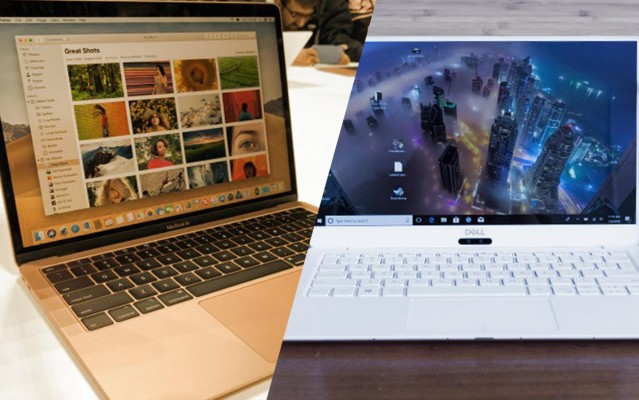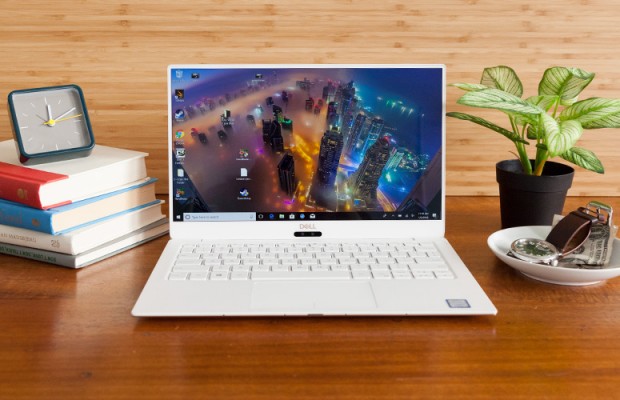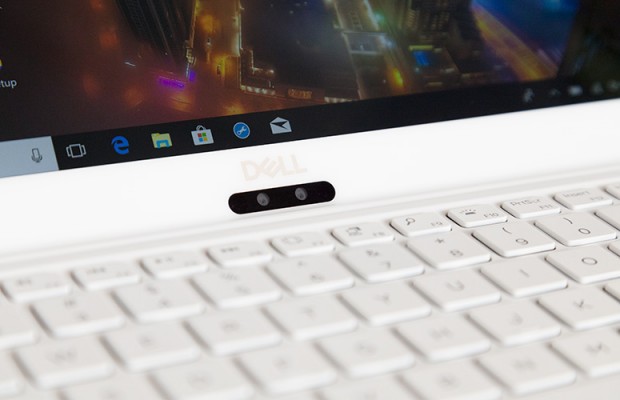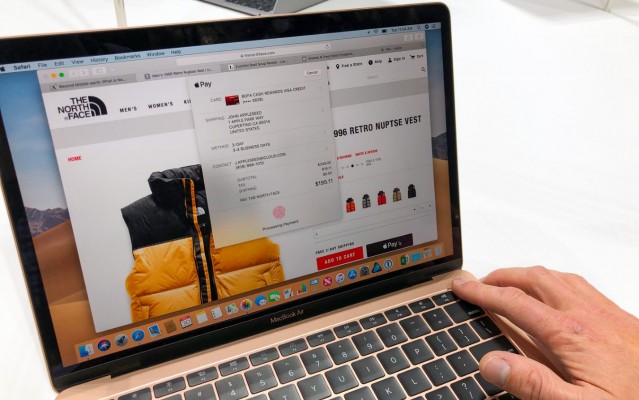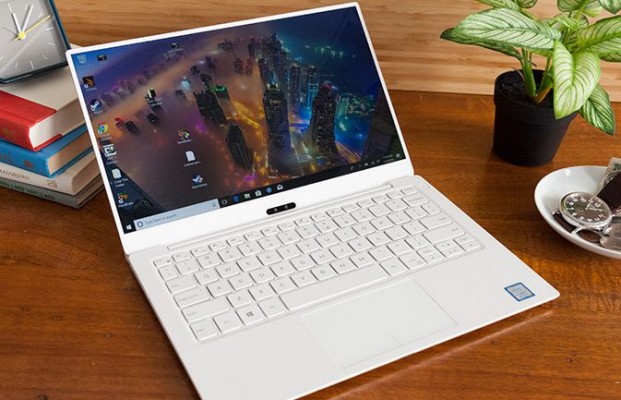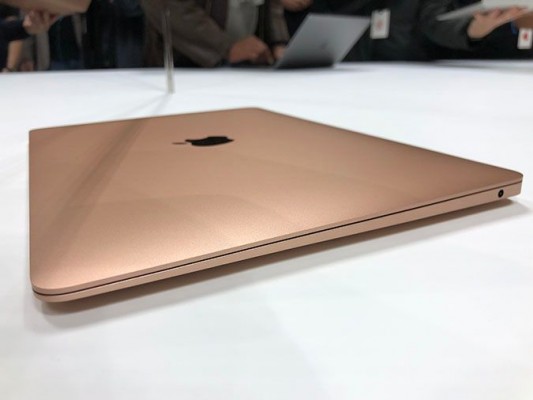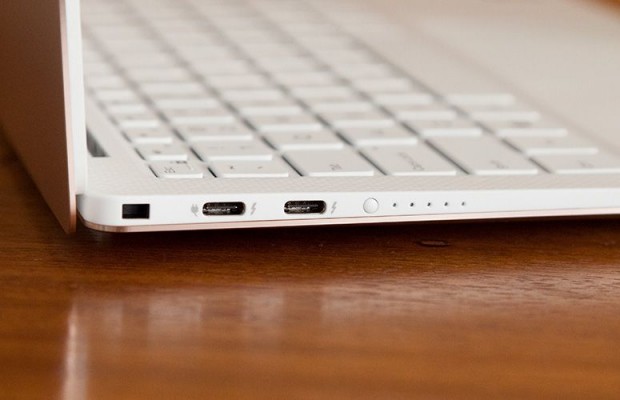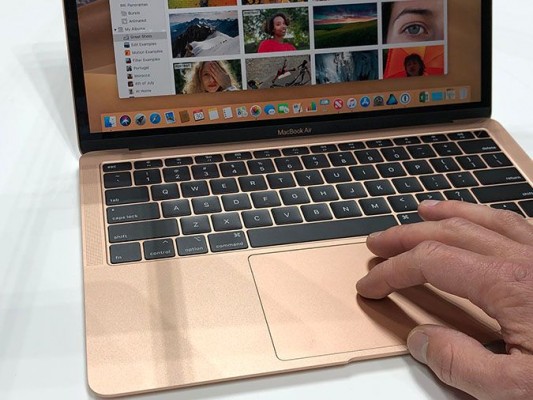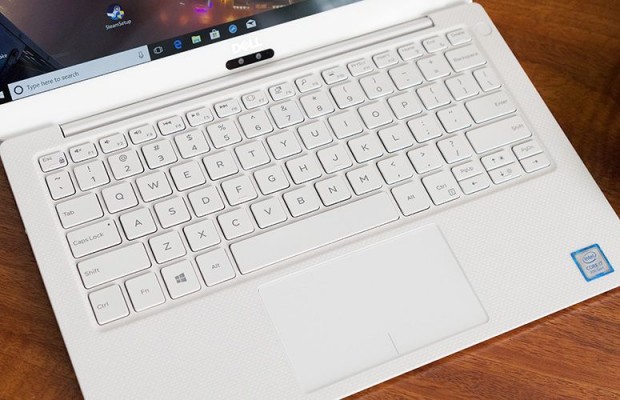Apple MacBook Air vs. Dell XPS 13: Which Should You Buy?
The MacBook Air is finally back. The laptop now sports the Retina display it was desperately missing, along with beefed up internals and some interesting new features. The new MacBook Air puts up a good fight, but can it dethrone Dell's XPS 13?
Dell's 13-inch laptop helped modernized the industry with its edge-to-edge screen and remarkably compact design. Those advantages, combined with a stunning 4K display, speedy performance and long battery life, make it a compelling option over the aging MacBook Air. But the XPS 13's reign could soon come to an end now that Apple's beloved portable laptop has returned.
Here is how the new MacBook Air stacks up against the Dell XPS 13.
Design
The MacBook Air received a modern redesign with black bezels that are 50 percent slimmer than before. Along with providing a more immersive viewing experience, the trimmed down bezels allowed Apple to reduce the laptop's footprint by 17 percent. Fortunately, the bezels didn't force Apple to compromise on the webcam, which is still smartly located above the display.
Touch ID for fingerprint verification was added to the top-right corner of the keyboard, and the top-firing speakers are supposedly 25 percent louder. The unibody design is now made of 100 percent recycled aluminum and will be available in three colors: gold, silver and space gray.
The XPS 13 also received a major redesign this year. Dell further reduced the XPS 13's size, making it one of the most compact 13-inch laptops on the market. The machine also received a visual upgrade with a sleek, sexy, white-and-gold color scheme to go along with the silver-and-black option.
Sign up to receive The Snapshot, a free special dispatch from Laptop Mag, in your inbox.
The lid and bottom of the laptop are made from aluminum while the deck is fashioned from woven crystalline silica fiber. The new XPS 13 retains the edge-to-edge display that Dell pioneered but keeps the awkward webcam placement along with it.
MORE: Apple Pencil 2 Will Fix the Original's Worst Flaw
Despite the welcome changes Apple made to the MacBook Air, it is nowhere near the smallest or lightest 13-inch laptop. At 2.75 pounds and 12 x 8.4 x 0.6 inches, the MacBook Air is larger and heavier than the Dell XPS 13 (2.65 pounds, 11.9 x 7.8 x 0.5 inches). Still, we prefer the Apple machine for its eco-friendly material and better webcam placement.
Winner: MacBook Air
Apple MacBook Air (2018) vs. Dell XPS 13 9370: Specs Compared
| Row 0 - Cell 0 | Apple MacBook Air | Dell XPS 13 (Core i5, 1080p) | Dell XPS 13 (Core i7, 4K) |
| Price | $1,100 - $1,399 | $1,199$1,199 | $2,499$2,499 |
| Colors | Silver, Space Gray, Gold | Platinum Silver/Black, Rose Gold/Alpine White | Platinum Silver/Black, Rose Gold/Alpine White |
| Display | 13.3 inches (2560 x 1600 pixels) | 13.3 inches (1920 x 1080 pixels) | 13.3 inches (3840 x 2160 pixels) |
| CPU | 8th Gen Y-Series Core i5 | Intel Core i5-8250U | Intel Core i7-8550U |
| RAM | 8GB, 16GB | 8GB | 16GB |
| SSD | 128GB, 256GB, 512GB, 1.5TB | 256GB SSD | 1TB SSD |
| Keyboard Travel | 0.6 mm | 1.2 mm | 1.2 mm |
| Ports | 2 Thunderbolt 3, headphone | 2 Thunderbolt 3, USB-C 3.1, microSD card, headphone jack, lock slot | 2 Thunderbolt 3, USB-C 3.1, microSD card, headphone jack, lock slot |
| Webcam | 720p | 720p | 720p |
| Size | 12 x 8.4 x 0.6 inches | 11.9 x 7.8 x 0.46 inches | 11.9 x 7.8 x 0.46 inches |
| Geekbench 4 | 7,871 | 13,254 | 14,180 |
| Battery Life (hrs:mins) | 9:32 | 12:37 | 8:23 |
| Weight | 2.7 pounds | 2.65 pounds | 2.65 pounds |
Pricing and Configuration Options
The MacBook Air starts at $1,199 for an 8th Gen Y-Series Core i5 CPU, 8GB of RAM and a 128GB SSD. You can increase the storage capacity to 256GB and 512GB, but it will cost you an extra $200 for each step up.
From there, you can ramp up storage capacity to 1.5TB for another $800. Doubling RAM from 8GB to 16GB adds another $200 for a grand total of $2,599 for a top-of-the-line configuration.
The XPS 13 is available in a wider range of configurations at varying prices. On the low end, a model with a Core i3 CPU, 4GB of RAM and a 128GB SSD costs $842. Upgrading to a Core i5 CPU while doubling RAM and storage increases the price to $1,088. If you want the most powerful CPU, you can spend $1,176 on an XPS 13 with the same specs but a Core i7 processor.
The 4K display upgrade boosts the price to $1,735 with 16GB of RAM and a 256GB SSD. From there, you can customize the components to match your budget. After configuring a 4K XPS 13 with a Core i7 CPU, 16GB of RAM and a 2TB SSD, I was hit with a $2,509 bill.
Winner: XPS 13
Display
A Retina display has finally arrived on the MacBook Air. The 13.3-inch panel sports a resolution of 2560 x 1600 for a pixels-per-inch density of 227. The new display is a major step up in sharpness when compared to its predecessor, but we wish it were brighter and more colorful. The panel reproduced 109 percent of the sRGB color gamut, which is shy of the premium laptop average (116 percent), and our review unit topped out at 234 nits of brightness, which, again, is worse than the average (317 nits).
The XPS 13 comes with two display options, both of which provide a better viewing experience than the MacBook Air's display. The 4K, UHD model is jaw-dropping, but the FHD panel has its own strengths. The 1080p display covers an impressive 117 percent of the sRGB color gamut and maxes out at 372 nits of brightness.
The 4K touch-screen display on the pricier XPS 13 reproduced 130 percent of the sRGB color gamut, which is better than even the display on the MacBook Pro. It also reached an excellent peak brightness of 415 nits, putting the MacBook Air to shame.
Winner: XPS 13
Ports
If you need a full-size USB Type-A port, then look elsewhere. The MacBook Air has a limited offering of inputs: two Thunderbolt 3 connections on the left side and a headphone jack on the right.
Thunderbolt 3 is a versatile port that can be used for charging and connecting to external peripheral, but we wish there were a USB Type-A and a microSD card slot.
With the XPS 13, you get two Thunderbolt 3 ports and a Kensington lock on the left side along with a USB Type-C port, a microSD card slot, and a headphone jack on the right side.
Winner: XPS 13
Keyboard and Touchpad
Apple brought its contentious Butterfly keyboard to the MacBook Air, and, as predicted based on the MacBook and MacBook Pro, the keys have very shallow travel, at 0.6 millimeters (1.5 to 2mm is our preference). Fortunately, an actuation force of 70 grams means the keys won't slow down your fingers. Although the MacBook Air doesn't offer the most comfortable typing experience, the backlit keys are four times more stable this time around. On the MacBook Air, I tapped a rate of 106 words per minute with a 86 percent accuracy in the 10fastfingers.com typing test.
The MacBook Air's Force Touch trackpad has increased in size by 20 percent. Apple has a long history of producing some excellent trackpads, and the one on the MacBook Air is no different.
With 1.2 mm of key travel, the XPS 13's keyboard is shallow, but it offers a solid typing experience, nonetheless. That's thanks to its 72 grams of actuation force, which is just about ideal. I typed 116 words per minute with an error rate of seven percent on the 10fastfingers typing test, which is much better than what I achieved on the MacBook Air. The 4.1 x 2.4-inch touchpad was extremely accurate when we used it to browse the web and make Windows 10 gestures.
Winner: XPS 13
Performance
Because of its low-power Y-series CPU, the MacBook Air can't keep pace with the XPS 13 when it comes to performance.
Equipped with an Intel Core i5-8210Y CPU and 8GB of RAM, the MacBook Air scored a 7,871 on the Geekbench 4.3 performance test, achieving only two-thirds the category average (12,230) and falling desperately short of the XPS 13's (Core i5-8250U, 8GB of RAM) 13,254.
The MacBook Air makes up for that huge gap in performance with a blazing fast hard drive. The Blackmagic disk test clocked the 256GB SSD at a blazing 2.1 gigabytes per second, four times faster than the premium category average (500 megabytes per second). The XPS 13's hard drive is reasonably swift, at 508 MBps.
But back to the MacBook Air's underpowered processor. The laptop needed 3 minutes and 26 seconds to match 60,000 names to their corresponding addresses in Excel. That is more than twice as long as the category average (1:34) and the XPS 13 (1:08). Similarly, the Apple machine leisurely converted a 4K video to 1080p resolution on the Handbrake app, taking 37 minutes and 24 seconds. Again, the XPS 13 did the same task in less than half that time, at 18 minutes and 27 seconds.
Winner: XPS 13
Battery Life
At 9 hours and 32 minutes, the MacBook Air has reasonably long battery life, topping the premium notebook average (8:09). However, that runtime is somewhat disappointing considering Apple rated the laptop's battery life at up to 12 hours of continuous web browsing.
MORE: Laptops with the Longest Battery Life
The XPS 13 with a 1080p display is the Energizer bunny of laptops when it comes to endurance. It lasted 12 hours and 27 minutes while web surfing on our battery test. Unsurprisingly, the 4K XPS 13 powered down several hours before its lower-res sibling, at 8 hours and 23 minutes.
Winner: Draw
Overall Winner: Dell XPS 13
The MacBook Air is undoubtedly an improvement over its outdated predecessor, but the once-leading laptop can't keep up with the latest and greatest Windows machines. The XPS 13 is a better laptop in almost every way, most notably when it comes to performance, where its U-series CPU trumps the low-powered Y-series chip in the MacBook Air.
| Row 0 - Cell 0 | Apple MacBook Air | Dell XPS 13 |
| Design (10) | 9 | 8 |
| Ports (10) | 5 | 6 |
| Display (15) | 10 | 13 |
| Keyboard/Touchpad (10) | 5 | 7 |
| Performance (20) | 13 | 17 |
| Battery Life (20) | 18 | 18 |
| Value (10) | 5 | 7 |
| Overall (100) | 65 | 76 |
And while the MacBook Air has the better design, the XPS's display is brighter and more vibrant, its keyboard is much more comfortable to type on, and it costs significantly less for the same specs as the Apple laptop. Overall, the MacBook Air closes the gap on the XPS 13, but, after three years of waiting, it fails to regain its crown.
Credit: Laptop Mag
Phillip Tracy is the assistant managing editor at Laptop Mag where he reviews laptops, phones and other gadgets while covering the latest industry news. After graduating with a journalism degree from the University of Texas at Austin, Phillip became a tech reporter at the Daily Dot. There, he wrote reviews for a range of gadgets and covered everything from social media trends to cybersecurity. Prior to that, he wrote for RCR Wireless News covering 5G and IoT. When he's not tinkering with devices, you can find Phillip playing video games, reading, traveling or watching soccer.
